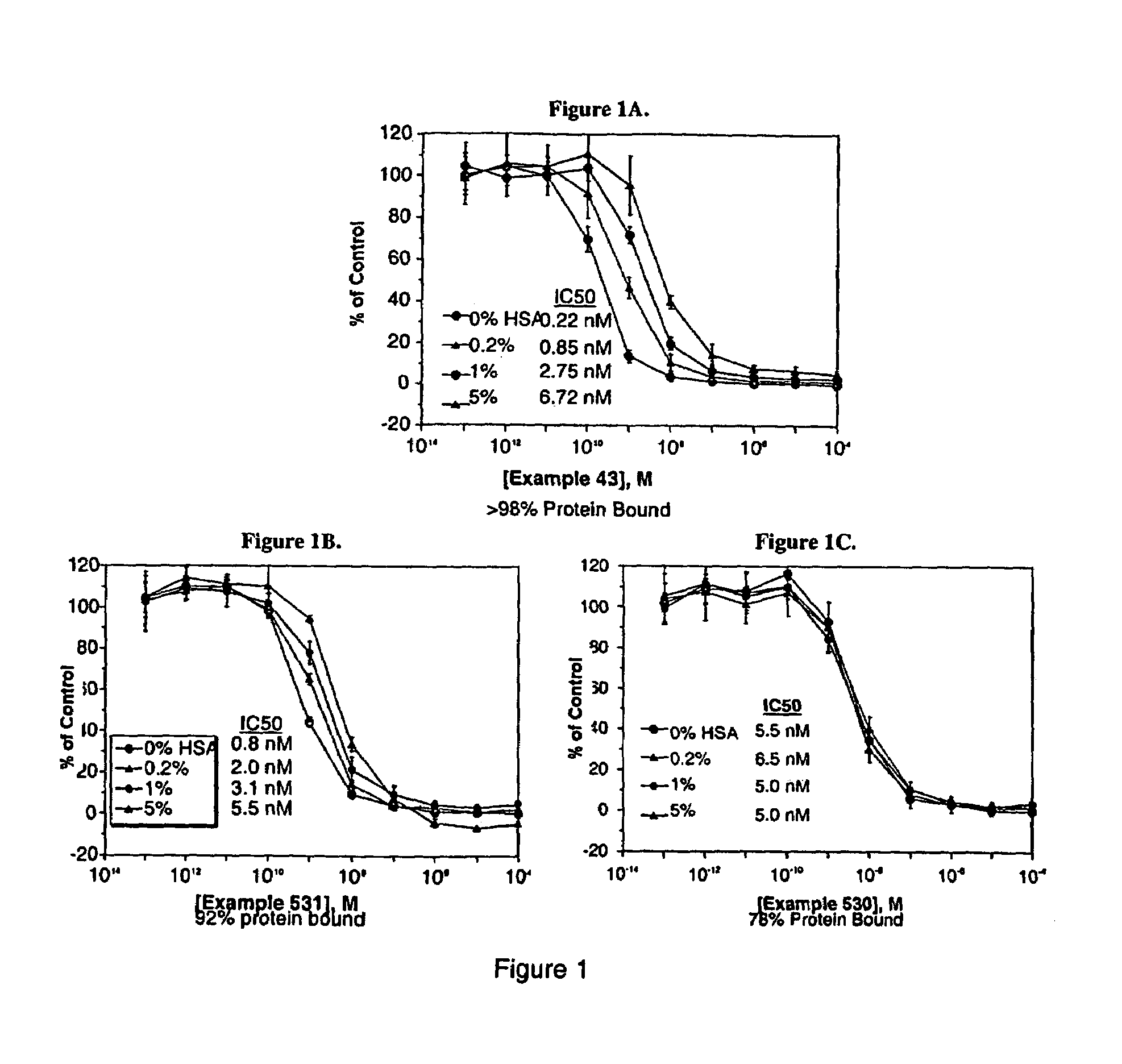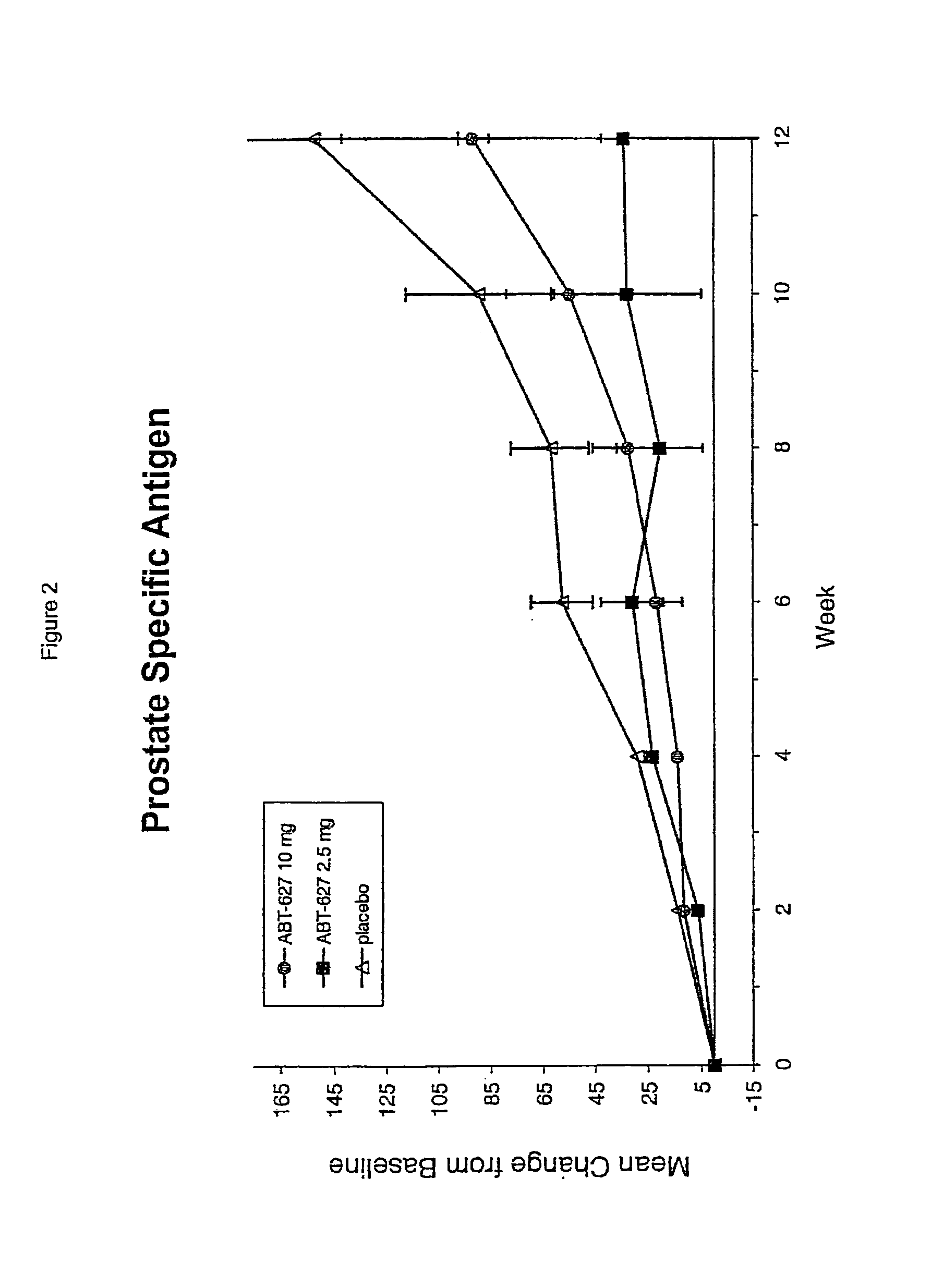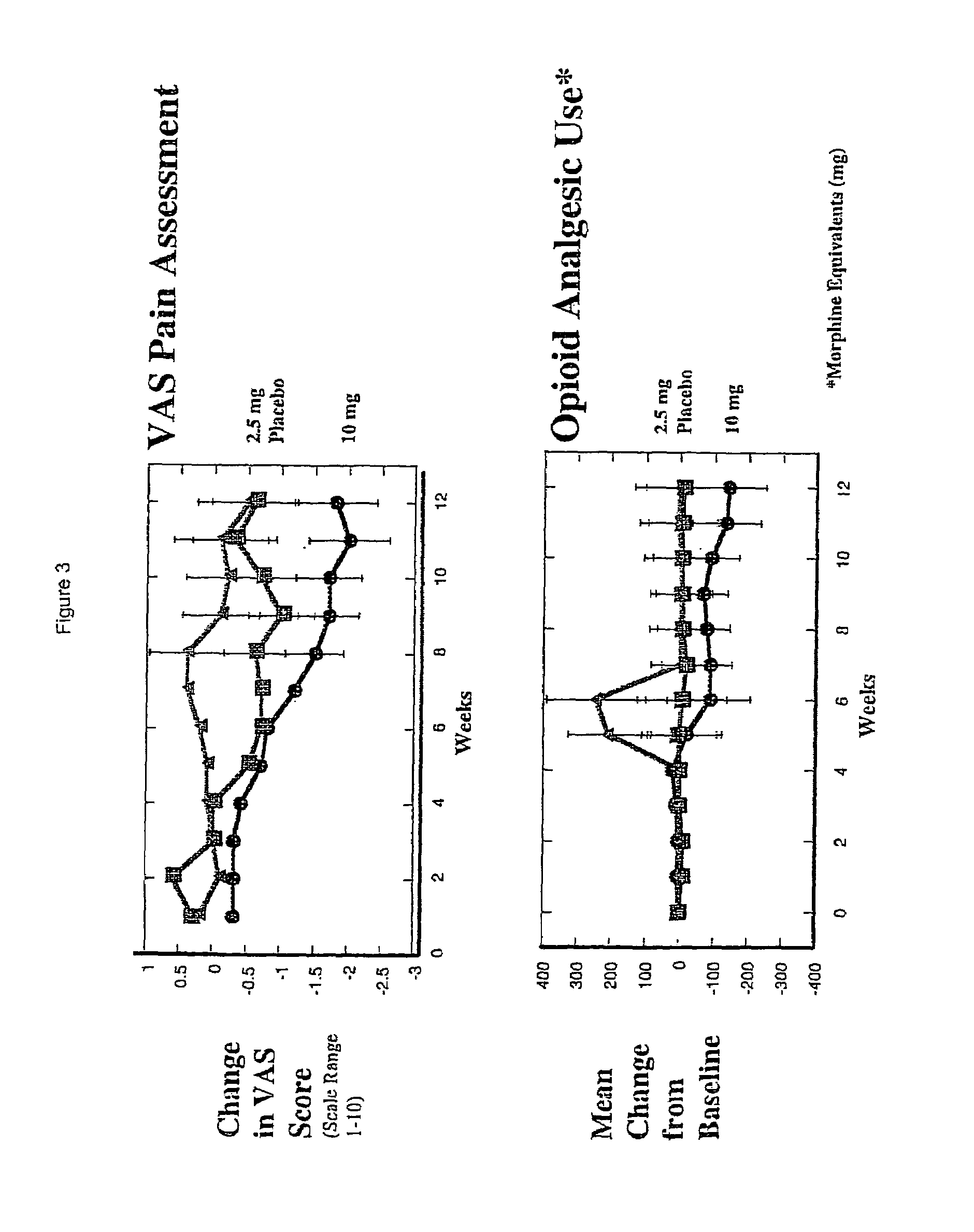Endothelin antagonists
- Summary
- Abstract
- Description
- Claims
- Application Information
AI Technical Summary
Benefits of technology
Problems solved by technology
Method used
Image
Examples
example 1a
Ethyl 2-(4-methoxybenzoyl)-4-nitromethyl-3-(1,3-benzodioxole-5-yl)butyrate
[0566]To ethyl (4-methoxybenzoyl)acetate (23.0 g, 0.104 mol), prepared by the method of Krapcho et al., Org. Syn. 47, 20 (1967), and 5-(2-nitrovinyl)-1,3-benzodioxole (17.0 g, 0.088 mol) dissolved in 180 mL of toluene and heated to 80° C. was added 1,8-diazabicyclo[5,4,0]undec-7-ene (DBU, 0.65 g) with stirring. The mixture was heated until all the nitro starting material dissolved. The solution was stirred without heating for 30 minutes (min) and then an additional 0.65 g of DBU was added. After stirring an additional 45 minutes, thin layer chromatography (5% ethyl acetate in methylene chloride) indicated the absence of nitro starting material. Toluene (200 mL) was added, and the organic phase was washed with dilute hydrochloric acid and NaCl solution. The organic phase was dried over sodium sulfate and then concentrated under reduced pressure. The residue obtained was chromatographed on silica gel eluting wit...
example 1b
Ethyl 2-(4-methoxyphenyl)-4-(1,3-benzodioxol-5-yl)-4,5-dihydro-3H-pyrrole-3-carboxylate
[0567]The compound resulting from Example 1A (21 g) in 500 mL of ethanol was hydrogenated under 4 atmospheres of hydrogen pressure using a Raney nickel 2800 catalyst (51 g). (The Raney nickel was washed with ethanol three times before use.) The catalyst was removed by filtration, and the solution was concentrated under reduced pressure. The residue obtained was chromatographed on silica gel eluting with 8.5% ethyl acetate in methylene chloride to give 12.34 g of the desired product.
example 1c
Ethyl 2-(4-methoxyphenyl-4-(1,3-benzodioxol-5-yl)-pyrrolidine-3-carboxylate) as a Mixture of cis—cis; trans,trans; and cis,trans-isomers
[0568]The compound resulting from Example 1B (11.89 g, 0.324 mol) was dissolved in 27 mL of tetrahydrofuran and 54 mL of ethanol. Sodium cyanoborohydride (2.35 g, 0.374 mol) and 5 mg bromocresol green were added. To this blue solution was added dropwise a solution of 1:2 concentrated HCl in ethanol at such a rate that the color was kept at light yellow-green. After the yellow color persisted without additional HCl, the solution was stirred an additional 20 minutes. The solution was concentrated in vacuo and then partitioned between chloroform and an aqueous potassium bicarbonate solution. The organic phase was separated, dried over sodium sulfate, and concentrated under reduced pressure. The residue was chromatographed on silica gel eluting with 85:15 ethyl acetate-hexane to give 5.96 g. of a mixture of 64% trans,trans-compound and 34% cis,trans-com...
PUM
 Login to View More
Login to View More Abstract
Description
Claims
Application Information
 Login to View More
Login to View More - R&D
- Intellectual Property
- Life Sciences
- Materials
- Tech Scout
- Unparalleled Data Quality
- Higher Quality Content
- 60% Fewer Hallucinations
Browse by: Latest US Patents, China's latest patents, Technical Efficacy Thesaurus, Application Domain, Technology Topic, Popular Technical Reports.
© 2025 PatSnap. All rights reserved.Legal|Privacy policy|Modern Slavery Act Transparency Statement|Sitemap|About US| Contact US: help@patsnap.com



